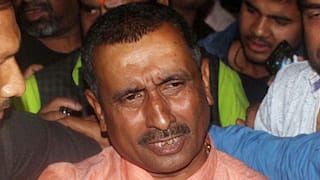EXPLAINED | Signs Of Cardiac Arrest And Immediate Steps That Should Be Taken
A cardiac arrest is the abrupt loss of heart function in a person who may or may not have been diagnosed with heart disease, and can come suddenly or in the wake of other symptoms.

New Delhi: India has one of the highest burdens of cardiovascular disease worldwide. Over the past several decades, coronary heart disease prevalence rates in India have ranged from 1.6 to 7.4 per cent in rural populations and from one to 13.2 per cent in urban populations, according to the United States National Institutes of Health (NIH).
In 2016, an estimated 17.9 million people worldwide died from CVD, accounting for 31 per cent of all global deaths. In 2016, 63 per cent of total deaths reported in India were due to non-communicable diseases. Of these, 27 per cent were attributed to CVDs, according to the World Health Organization (WHO). These diseases also account for 45 per cent of deaths in the 40-69 year age group.
Famous Bollywood singer Krishnakumar Kunnath, popularly known as KK, breathed his last in Kolkata on Tuesday night. The 53-year-old singer was performing at a concert organised by a college at Nazrul Mancha in south Kolkata for almost an hour on Tuesday evening. After reaching his hotel, he started "feeling heavy", and soon collapsed, following which he was taken to Kolkata's CMRI hospital, news agency PTI reported. A doctor at the hospital said: "KK was brought to the hospital around 10 pm. It's unfortunate that we could not treat him."
Doctors at the hospital suspect that KK died due to a "cardiac arrest", the PTI report said. A post-mortem would be conducted on Wednesday to ascertain the exact reason for the death.
"Cardiac arrest" and "heart attack" are terms often used interchangeably, but are not the same. Since both can result in death, it is important to know the signs of a cardiac arrest and heart attack, and seek immediate medical help.
What Is A Cardiac Arrest?
A cardiac arrest is the abrupt loss of heart function in a person who may or may not have been diagnosed with heart disease, and can come suddenly or in the wake of other symptoms. If appropriate steps are not taken immediately, a cardiac arrest can be fatal.
Signs Of A Cardiac Arrest
A person is said to have a cardiac arrest when the heart suddenly stops pumping blood around the body, according to the British Heart Foundation. When the heart stops pumping blood, the brain is deprived of oxygen, causing the person to fall unconscious and stop breathing.
Certain types of arrhythmias, which prevent the heart from pumping blood, result in cardiac arrests. A heart arrhythmia is an irregular heartbeat.
Steps To Be Taken In Case Of A Cardiac Arrest
A cardiac arrest usually happens before warning. Therefore, it is important to know the signs of a cardiac arrest. A person who has a cardiac arrest will collapse suddenly and will become unconscious, unresponsive, and will not breathe normally. In some cases, the person may not be breathing at all.
The person may suddenly lose responsiveness, which means they may not respond even when tapped hard on the shoulders or asked loudly if they are fine.
If one is near a person who has had a cardiac arrest, they must dial the local emergency number immediately. In India, the helpline number for ambulance services is 102.
CPR
Also, the person nearby can perform CPR (cardiopulmonary resuscitation) if they know how it is done. CPR is a lifesaving technique which is useful when someone has stopped breathing or their heartbeat has come to a halt. The American Heart Association recommends that CPR should be started with hard and fast chest compressions. The hands-only CPR can be performed by both untrained bystanders and first responders.
CPR can keep oxygen-rich blood flowing to the brain and other vital organs until emergency medical treatment can restore a typical heart rhythm, thereby preventing damage to the brain due to the lack of oxygen-rich blood.
If the person is not breathing or is only gasping, one can begin CPR with compressions. If the person is still unresponsive, the bystander must begin high quality CPR, by pushing down at least two inches in the centre of the chest at a rate of 100 to 120 pushes per minute. One must allow the chest to come back to its normal position after each push.
Automated External Defibrillators (AEDs)
Automated External Defibrillators (AEDs) are a type of portable defibrillator installed in certain places where people gather, including airports, hospitals, train stations and schools, and offer a way for bystanders to provide treatment until first responders arrive. Defibrillators are devices that send an electric pulse or shock to the heart to restore a normal heartbeat, and can be used to prevent or correct an arrhythmia.
If an AED is not publicly available, one must turn it on as soon as first responders arrive with it.
What Are The Causes Of A Cardiac Arrest?
A life-threatening abnormal heart rhythm called ventricular fibrillation is a common cause of a cardiac arrest, and happens when the electrical activity of the heart becomes so chaotic that the heart stops pumping, and instead, quivers or fibrillates.
Other causes of a cardiac arrest include a heart attack, caused by coronary heart disease, congenital heart disease, heart valve disease, and acute myocarditis, which is inflammation of the heart muscle.
An electrocution, a drug overdose, a severe haemorrhage, and hypoxia, caused by a severe drop in oxygen levels, can also result in a cardiac arrest
Check out below Health Tools-
Calculate Your Body Mass Index ( BMI )
Calculate The Age Through Age Calculator





























